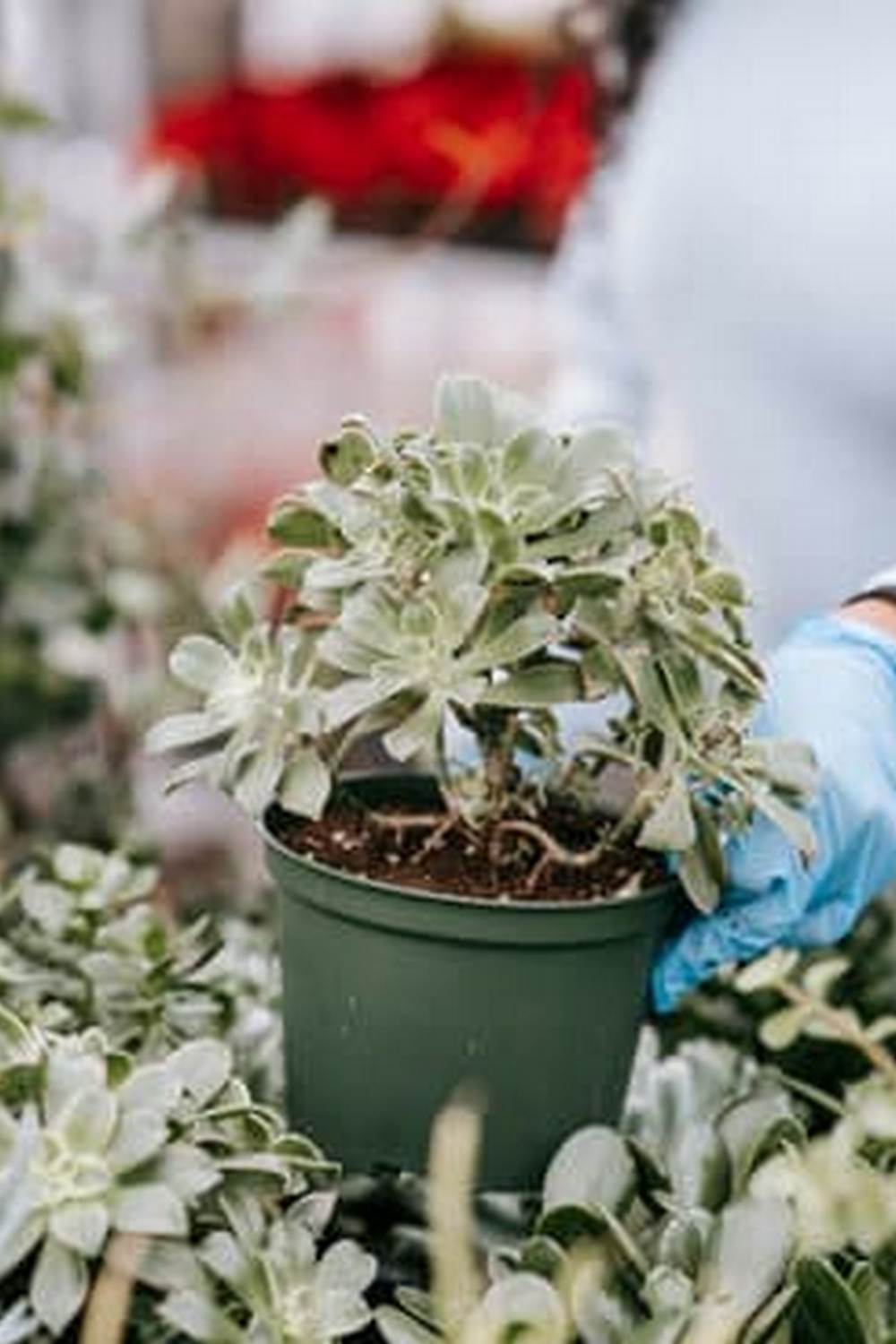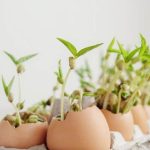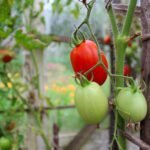Container gardening is a popular option for those looking to grow their own vegetables, especially for those with limited space. The container size for vegetable gardening is a crucial factor that can greatly impact the growth and yield of your plants. Choosing the right size container is essential to ensure that your plants have enough room to thrive and produce healthy crops.
When selecting a container size for your vegetables, there are several factors to consider. The type of vegetable you are planning to grow, the root depth requirements, and the spacing needed between plants all play a role in determining the appropriate container size. Additionally, considering the location where you will be placing your containers is important as well – ensuring they receive adequate sunlight and air circulation.
Proper drainage is also vital when choosing a container size for vegetable gardening. Containers that are too large or too small can affect water retention and lead to issues such as root rot or nutrient deficiencies.
Selecting containers with adequate drainage holes and using quality potting soil can help maintain proper moisture levels for your plants. Stay tuned for our comprehensive guide on the best container sizes for popular vegetables, tips on matching container size with different vegetable types, DIY options, and common mistakes to avoid in container gardening.
The Importance of Proper Drainage in Container Size Selection
When it comes to selecting the right container size for vegetable gardening, one important factor to consider is proper drainage. Without adequate drainage, plants can suffer from root rot and other water-related issues.
The size of the container directly impacts its ability to drain effectively, as larger containers tend to have better drainage than smaller ones. Additionally, the material of the container can also affect drainage – porous materials like terracotta allow excess water to evaporate more easily than non-porous materials like plastic.
To ensure that your vegetables thrive in containers, it’s crucial to choose pots that have drainage holes at the bottom. These holes allow excess water to escape, preventing waterlogged soil and ensuring that oxygen can reach the roots. When selecting a container size, consider not only the volume of soil needed for your vegetables but also the number and size of drainage holes. Larger containers may require more drainage holes or larger ones to facilitate proper drainage.
Proper drainage is essential for healthy plant growth in containers, as it helps prevent issues like mold, mildew, and root diseases. By choosing containers with adequate drainage and matching them with the right container size for your vegetables, you can create an optimal growing environment for your plants. Whether you’re growing tomatoes, peppers, lettuce, or herbs in containers, ensuring proper drainage through appropriate container sizing is key to success in vegetable gardening.
| Container Size | Ideal Vegetables |
|---|---|
| Small Containers (less than 5 gallons) | Lettuce, herbs, radishes |
| Medium Containers (5-10 gallons) | Tomatoes, peppers, cucumbers |
| Large Containers (10+ gallons) | Squash, pumpkins, eggplant |
Best Container Size for Popular Vegetables
When it comes to choosing the right container size for popular vegetables in your garden, it is important to consider the specific needs of each type of plant. Different vegetables have varying root systems and growth habits, which means they require different amounts of space to thrive. In general, larger vegetables such as tomatoes, peppers, and eggplants will need larger containers compared to smaller plants like herbs or lettuce.
For larger vegetables like tomatoes, a container size of at least 5 gallons is recommended to provide enough room for their extensive root systems and support their tall growth habit. Peppers and eggplants also do well in containers that are around 3-5 gallons in size. On the other hand, smaller vegetables like herbs, lettuce, and radishes can thrive in smaller containers ranging from 1-3 gallons.
It is important to keep in mind that the size of the container will directly impact the growth and yield of your vegetable plants. A too-small container can restrict root development and lead to stunted growth and reduced harvests. Conversely, a too-large container can cause waterlogging and nutrient leaching if not properly managed. Matching the right container size with the specific needs of each vegetable will ensure optimal growth and productivity throughout the growing season.
How Container Size Affects Plant Growth and Yield
When it comes to container gardening, the size of your containers can have a significant impact on the growth and yield of your vegetables. The container size directly affects the root system of the plants, which in turn influences their overall health and productivity. Choosing the right container size is crucial for providing enough space for roots to spread out and absorb nutrients efficiently.
Root Development and Container Size
The size of the container plays a crucial role in determining how well a plants’ root system develops. Inadequate space can lead to root-bound plants, where the roots become cramped and tangled, hindering their ability to take up water and nutrients effectively. On the other hand, a larger container allows ample room for roots to grow and expand, resulting in healthier plants with better access to essential resources.
Adequate Soil Volume
Another factor affected by container size is the volume of soil available for each plant. A larger container offers more soil volume, which can hold moisture better and provide a more stable environment for plant growth. This can result in lower maintenance requirements as larger containers need less frequent watering compared to smaller ones. Additionally, adequate soil volume ensures that plants have access to sufficient nutrients, promoting robust growth and higher yields.
Tips for Matching Container Size With Vegetable Type
When it comes to container gardening, matching the right container size with the type of vegetable you are growing is crucial for ensuring successful growth and yield. Different vegetables have varying root systems and space requirements, so it’s important to choose the appropriate container size to accommodate their needs.
Consider Root Depth and Spacing
One of the key factors to consider when matching container size with vegetable type is the root depth and spacing requirements of the plant. For example, vegetables with shallow roots like lettuce or spinach can thrive in smaller containers, while plants with deeper roots such as tomatoes or peppers will require larger containers with more depth for proper growth. Additionally, consider the spacing needed between plants to avoid overcrowding, which can lead to competition for nutrients and hinder growth.
Factors Influencing Container Size Selection
In addition to root depth and spacing, other factors that influence container size selection include the overall size of the mature plant, its watering needs, and whether it is a determinate or indeterminate variety. Some vegetables like cucumbers or squash may require larger containers due to their sprawling nature, while compact varieties like bush beans can be grown in smaller containers. Understanding these factors will help you make informed decisions when choosing the right container size for your vegetable garden.
Experimenting With Different Sizes
If you’re unsure about the ideal container size for a specific vegetable, don’t be afraid to experiment with different sizes. Start by observing how well each plant grows in its designated container and make adjustments as needed.
Keep in mind that some vegetables may require transplanting into larger containers as they grow, so stay flexible in your approach. By paying attention to the specific needs of each vegetable type and adjusting container sizes accordingly, you can optimize your garden space and enjoy a bountiful harvest.
DIY Container Options for Different Container Sizes
When it comes to vegetable gardening in containers, choosing the right container size is crucial for the health and growth of your plants. Depending on the type of vegetables you want to grow, different container sizes are required to ensure they have enough space to thrive. DIY container options can provide a cost-effective and customizable solution for gardeners looking to match the perfect container size with their favorite vegetables.
To help you get started, here are some DIY container options for different container sizes that you can consider for your vegetable garden:
- Small Containers (6-8 inches): These are ideal for small herbs like basil, cilantro, or chives. You can repurpose tin cans, mason jars, or plastic containers as small pots for these herbs.
- Medium Containers (10-12 inches): Vegetables like lettuce, radishes, or spinach thrive in medium-sized containers. You can easily use wooden crates or upcycled buckets as DIY planters for these veggies.
- Large Containers (16-24 inches): For larger vegetables such as tomatoes, peppers, or cucumbers, opt for bigger containers. You can repurpose old barrels, laundry baskets, or even build raised beds using lumber for these plants.
By choosing the right DIY container options based on the container size for vegetable gardening, you can create a customized and budget-friendly setup that meets the needs of your favorite crops. Whether you have limited space or simply prefer a more creative approach to gardening, DIY containers provide endless possibilities for growing a successful vegetable garden right at home.
Common Mistakes to Avoid When Selecting Container Size for Vegetable Gardening
When it comes to selecting the right container size for vegetable gardening, there are certain common mistakes that should be avoided in order to ensure successful growth and yield of your plants. One of the most common errors is choosing a container that is too small for the type of vegetables you want to grow.
Insufficient root space can stunt plant growth and lead to lower yields. It is important to consider the mature size of the plant when selecting a container size.
Another mistake often made is not considering the depth of the container. Vegetables like carrots, potatoes, and tomatoes require deeper containers to accommodate their extensive root systems. Shallow containers can limit root development and hinder nutrient uptake, resulting in smaller harvests. Researching the specific needs of each vegetable you plan to grow will help you determine the appropriate container depth required for optimal growth.
Additionally, overlooking proper drainage when selecting a container size can have detrimental effects on your vegetables. Without adequate drainage holes in the bottom of your container, excess water can accumulate and lead to root rot or other diseases. It is essential to choose containers with sufficient drainage holes or create additional holes if needed to prevent waterlogging. Proper drainage promotes healthy root development and overall plant vitality, leading to a successful vegetable garden harvest.
- Always consider the mature size of your chosen vegetables when selecting a container size.
- Ensure containers are deep enough to accommodate extensive root systems for optimal growth.
- Make sure containers have proper drainage holes or add them yourself to prevent waterlogging.
Choosing the Ideal Container Size for Limited Space Gardening
When it comes to limited space gardening, choosing the ideal container size is crucial for maximizing your vegetable yield. In small-space gardening, every inch counts, so selecting the right container size can make a significant difference in the success of your garden. Consider factors such as the mature size of the vegetable plant, root depth requirements, and spacing recommendations when deciding on container size.
Proper drainage is especially important when selecting container sizes for limited space gardening. Ensure that your containers have adequate drainage holes to prevent waterlogged soil, which can lead to root rot and other issues. Additionally, using elevated containers or adding risers underneath can help improve drainage and airflow to promote healthy root growth in smaller spaces.
One popular small-space solution is utilizing vertical gardening techniques with smaller containers such as hanging baskets or stackable pots. These options not only save floor space but also provide opportunities for growing a variety of vegetables in a limited area.
Remember to match the container size with the specific vegetable type to ensure optimal growth and yield, taking into account factors like root depth, spacing requirements, and overall plant size. By carefully considering these factors and utilizing creative container options, you can successfully cultivate a thriving vegetable garden even in limited spaces.

If you’re looking to get into vegetable gardening, or are just looking for some tips on how to make your current garden better, then you’ve come to the right place! My name is Ethel and I have been gardening for years. In this blog, I’m going to share with you some of my best tips on how to create a successful vegetable garden.





